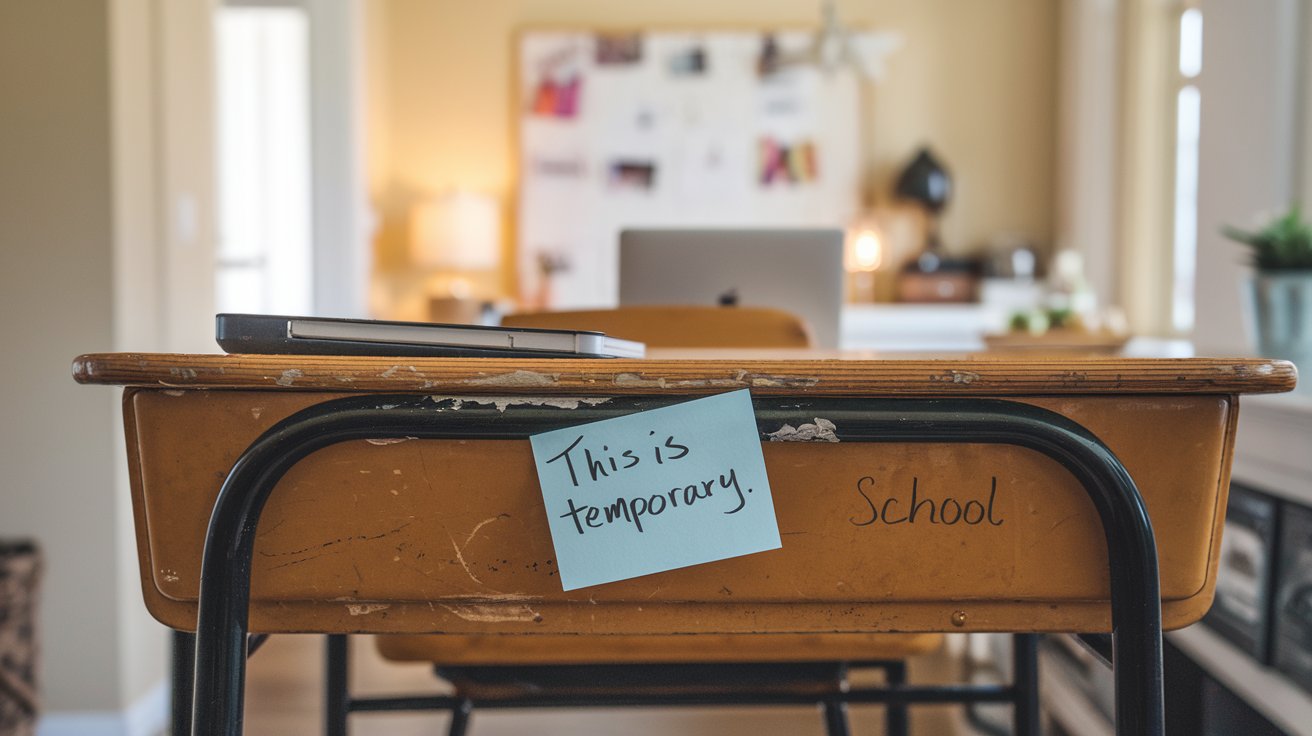Your cart is currently empty!

Finding time for Slow Living
Discover practical ways to embrace Slow Living even with a packed schedule. I’ll show you how to find meaningful moments of calm within your busy daily routine.
This post may contain affiliate links. At no cost to you, I may earn a small commission if you click on any affiliate link within my blog. Some of the content on this website was created with the help of AI.
Finding time for slow living has become a growing priority for me. As I sit here at my desk at school, thinking of my never ending to-do list, I am constantly reminded of my desire for slow living.
The relentless pursuit of productivity has drained my energy and disconnected me from life’s essentials. I wonder if this frenetic pace is worth it.
How can I live slow when there is so much to do?
In a society that values busyness, the notion of a slower, more mindful existence seems counterintuitive. Yet, as I’ve navigated the complexities of modern life – the long hours, digital distractions, and endless tasks – I’ve discovered there is an alternative. This path allows us to seize moments of calm, appreciate the simple joys, and reconnect with what’s truly important.
This journey is not straightforward, but it’s transformative. It leads to a more fulfilling life, a stronger bond with those around us, and a fresh appreciation for the world’s beauty. In this piece, I’ll offer practical advice and insights to help you integrate slow living into your busy life.
Understanding the Modern Time Poverty Crisis
In today’s fast-paced world, many of us grapple with a growing sense of time poverty. Despite technological advancements promising to free up our time, we often feel more rushed and overwhelmed.
The Impact of Technology on Finding Time for Slow Living
Smartphones have blurred the lines between work and personal life. We’re constantly accessible, expected to respond to emails and messages at all hours. This 24/7 connectivity alters our time perception, making us believe there are never enough hours in the day.
The more we feel rushed, the more we think we lack time. Studies have shown that people who feel rushed, perceive time as moving faster. This creates a vicious cycle.
To overcome time poverty, we must challenge societal norms that prioritize constant busyness. We must reclaim our right to work-life balance.
By recognizing technology’s impact on our time perception and the cultural shift towards perpetual activity, we can start towards a more fulfilling life.
“The greatest weapon against time poverty is the intentional cultivation of mindfulness.” – Unknown
Breaking Free from the Speed Addiction
In our fast-paced digital world, our daily lives can feel like a whirlwind of activity, with little room for intentional living.
By taking a step back and implementing a few key strategies, we can break free from this speed trap.
This allows us to reclaim our time and mental energy.
Identifying Time-Wasting Habits
The first step in breaking free from the speed addiction is to identify the time-wasting habits that are keeping us constantly busy. Common culprits include:
- Excessive email checking throughout the day
- Attending unproductive meetings that could be handled through email or a quick chat
- Mindlessly scrolling through social media
- Saying “yes” to low-priority requests that don’t align with core goals
- Starting your day by reacting to others’ requests instead of focusing on priorities
- Letting notifications constantly interrupt your workflow
- Getting caught in the comparison trap on social media with others who seem to “do it all”
Setting Healthy Digital Boundaries
Once we’ve identified our time-wasting habits, it’s time to set healthy digital boundaries. This might involve limiting email checks to twice a day, turning off notifications on our smartphones, or dedicating specific times for social media browsing.
By regaining control over our digital devices, we can free up mental space for more meaningful activities.
Creating Mindful Transitions in Your Day
Alongside setting digital boundaries, it’s important to create mindful transitions in our daily routines. This could involve taking a few moments to pause and breathe before starting a new task, or finding a hobby that taps into our creativity and helps us slow down.
By incorporating these small but impactful practices, we can cultivate a greater sense of intentional living and avoid the constant feeling of being rushed.

Breaking free from the speed addiction is not an easy feat, but by addressing our time-wasting habits, setting healthy digital boundaries, and creating mindful transitions, we can reclaim our time and find a more balanced and fulfilling lifestyle.
The journey towards intentional living may take time, but the rewards are well worth it.
Building a Sustainable Slow Living Routine
Living slowly isn’t about moving through life like a snail. It means completely rethinking how we spend our time and what matters most. It’s about choosing quality over quantity in everything we do. Think of it like savoring a home-cooked meal versus rushing through fast food.
To make this lifestyle last, we need to focus on doing things well rather than doing more things.
Slow living may look like this:
- Enjoying your morning coffee while watching the sunrise, instead of gulping it down during your commute
- Having one meaningful conversation with a friend rather than scrolling through 50 social media updates
- Choosing to read one book deeply rather than skimming through five
- Spending a weekend teaching your kids to bake rather than rushing them through multiple activities
- Growing a few herbs in your kitchen rather than trying to maintain a perfect garden
- Taking a quiet walk in nature instead of fitting in another workout class
The key benefits:
- Less stress and anxiety from trying to do everything
- Deeper connections with family and friends
- Better understanding of what truly matters to you
- More joy from everyday moments
- Improved mental health from reduced pressure to “keep up”
- Greater sense of purpose in daily activities
Common misconceptions:
- It doesn’t mean being unproductive or lazy
- You don’t have to quit your job or move to the countryside
- It’s not about abandoning technology completely
- You don’t need to dramatically change your whole life at once
Finding time for slow living simple ideas:
- Pick one meal a day to eat without distractions
- Turn off phone notifications during family time
- Choose one weekend activity instead of packing in several
- Start your day 15 minutes earlier to avoid morning rush
- Practice saying “no” to non-essential commitments
Implementing the 3 Task Rule
One of my tried and tested approaches is the 3 task rule. Adopting the 3 task rule is a practical strategy to embody this quality-focused mindset.
By limiting ourselves to three critical tasks daily, we focus on what’s truly important, dismissing the non-essential. And living this way helps us cut through life’s daily chaos and find moments of peace in our busy world.
This is what got me through motherhood when my boys were younger. As long as I got 3 things done per day, I never felt like I wasn’t being productive. And if I ever had a day when I didn’t get 3 things done, all the other days that I did, made up for it.
Practical Time Management Tools for Busy Professionals
Managing time effectively is essential for maintaining a healthy work-life balance and enhancing productivity. Fortunately, numerous digital tools are available to streamline workflows and reclaim valuable moments. These tools are designed to assist busy professionals in optimizing their time usage.
Or if you are trying to limit your digital time, perhaps using a paper planner is a better option.
Digital calendars are fundamental time management tools. They enable scheduling appointments, visualizing time usage, and sharing availability with colleagues. Some useful digital tools include:
- Digital Calendars (e.g. Google Calendar)
- Capture Tools (e.g. Evernote, Microsoft OneNote, Trello)
- Communication Tools (e.g. Slack, Microsoft Teams)
- Collaboration Tools (e.g. Asana, Trello)
But if you are like me and prefer a more handwritten experience, paper planners offer a ritualistic way to write down tasks and deadlines.
It’s crucial to experiment with different time management tools to find the best fit for your work style and lifestyle. Be open to adapting and evolving your toolkit as your needs evolve.
With the right support, you can regain control over your time and achieve a sustainable work-life balance.

Making Space for What Truly Matters
The heart of slow living is asking yourself: “Will this add real value to my life?” rather than “Can I fit this in?”
Slow living is about spending time on things that truly matter to us. It means choosing to focus on what makes life richer – like having deep conversations with friends, doing activities we really love, or taking quiet moments to think and reflect.
Instead of rushing through our days trying to do everything, finding time for slow living is about choosing what’s most important and giving it our full attention.




